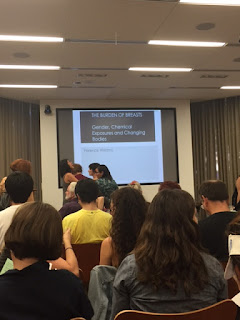Week 8: Nanotechnology + Art

Newman's Microscopic Text This week’s lectures and readings focused on the history of nanotechnology and its recently increasing applications. One of the more fascinating things that I thought we covered in the lectures was the two competitions offered by Richard Feynman for the advancement of nanotechnology in 1959. The first was to build a miniature motor that could fit inside of a 1/64 inch cube and the second was to reduce the size of a page of a book to a 1/25,000 linear scale (CalTech.edu). The first cash prize of $1,000 was awarded relatively quickly to William McLellan in 1960, while the second prize took 25 years until Tom Newman completed the task using an electron beam in 1985 (Kornei). Such advancements in nanotechnology have obvious application in the artistic and literary world, with new art being created out of nanostructures. I also found the invention of the scanning tunneling microscope in the 1980s to be particularly interesting within the field of n



